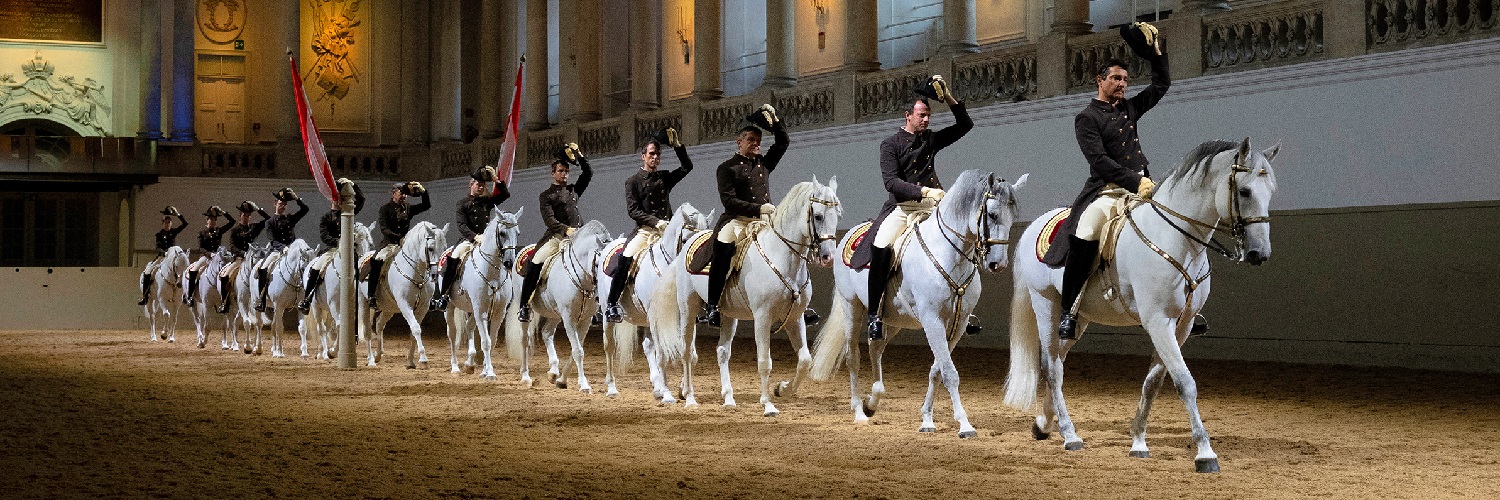Tosca - Schedule, Program & Tickets
Tosca
Opera from Giacomo Puccini
Mikko Franck | Dirigent
Margarethe Wallmann | Regie
Nicola Benois | Ausstattung
Angela Gheorghiu | Floria Tosca
Jonas Kaufmann | Mario Cavaradossi
Bryn Terfel | Baron Scarpia
Ryan Speedo Green | Cesare Angelotti
Alfred Šramek | Mesner
Benedikt Kobel | Spoletta
Marcus Pelz | Sciarrone
Il Hong | Schließer
N.N. | Hirt
Duration: 2 hours 30 minutes, Intermissions: 1
Giacomo Puccini pursued clear aims with his masterpiece, which celebrated its world premiere in 1900: "The sentiment in 'Tosca' is not romantic and lyrical, but passionate, excruciating, bleak. Up until now we were gentle, now we want to be brutal."
Nine months have passed since the collapse of the Roman Republic and Scarpia, head of the Roman police has set up a remorseless terror regime. Even the singer Floria Tosca and her lover, the painter Mario Cavaradossi, get into a deadly conflict with the brutal chief of police ... - An enthralling piece of musical theatre!
ACT I
Rome in the year 1800. Republicans pinning their hopes on Napoleon are being subjected to a rule of terror. One of their leaders, Angelotti, has managed to escape from the Fort St. Angelo prison and seeks sanctuary in the church of Sant’ Andrea della Valle. He hides in the Attavanti family chapel, the key of which has been left for him by a pre-arranged plan. In the church the painter Mario Cavaradossi is working on a painting of the Magdalena, using as his model (only without her knowing it) a beautiful lady who comes to the church to pray. She is Marchesa Attavanti, Angelotti’s sister.
Angelotti comes out of his hiding place, confident that he can trust Cavaradossi. Nor is he mistaken, for Cavaradossi gives him the basket of food which was brought for himself and sends him back to his hiding place just as his beloved Floria Tosca is heard coming into the church. She is immediately struck by his uneasiness and notices that his painting of the Magdalena has an exact likeness of the Marchesa Attavanti. She cannot restrain her jealousy, and it is all Cavaradossi can do to persuade her that he is innocent, that her suspicions are unfounded, and that it is she alone whom he loves. After Tosca has departed Cavaradossi tells Angelotti he knows of a better hiding place for him, an empty well on his property. Suddenly there is a canon shot from the Fort, a signal that Angelotti’s escape has been discovered. It is high time he found a new hiding place.
A service is being held in the church. Suddenly Rome’s Chief of Police, Scarpia, comes in. as soon as Angelotti’s escape was discovered Scarpia felt instinctively that the Attavanti chapel should be the first place for him to look in, and sure enough he finds the empty food basket Cavaradossi had given Angelotti, and the Marchesa’s fan. He immediately realizes that the latter is far more than just a clue: his knowledge of human frailties tells him that it can be used to inflame Tosca’s jealousy. And so it proves: Tosca once again doubts her lover’s fidelity, and Scarpia is a step nearer possession of Tosca, whose love for Cavaradossi makes her blind to all danger. While a solemn procession winds its way into the church, Scarpia gloates over his imminent triumph.
ACT II
A rumor that Napoleon has suffered a defeat leads to a great celebration at the Palazzo Farnese, to which Tosca contributes a song. Scarpia can hear her voice from his room in the Palazzo. He accordingly has Cavaradossi brought in. the basket and fan do not succeed in making him talk, so Scarpia orders him to be dealt with in the adjoining torture chamber.
Tosca arrives just in time to see him being led away to the torture chamber. Scarpia is well aware that mental torture in more effective than physical; Cavardossi’s screams of agony are too much for Tosca and she gives away Angelotti’s hiding place. And wen Cavaradossi is brought before Scarpia again, Scarpia allows himself the pleasure of telling him what Tosca has done. But Cavaradossi’s despair soon changes to triumph as news is handed to Scarpia of Napoleon’s victory at Marengo. Now the end of the tyranny is surely in sight. Only Cavaradossi will not live to see it, for he is to be shot for high treason. Tosca now plays her last card to secure Cavaradossi’s release. Scarpia has told her what the price is, and she says she is ready to pay it. To keep up the pretence Scarpia orders a mock execution: Cavaradossi is to be brought on blindfolded but the rifles will be loaded with blank ammunition. While Scarpia is making out safe conducts for Tosca and Cavaradossi Tosca’s hand lights on a knife, and just as Scarpia is about to claim his agreed reward she stabs him, snatches the passes from his dying grasp, and makes off without being seen.
ACT III
Cavaradossi is to be shot on the Fort. St. Angelo. He is allowed to write a farewell letter to Tosca, and as memories of her come flooding back, suddenly she appears before him, tells him what has happened, shows him how he is to behave at the mock execution, and assures him they are both safe. Cavaradossi faces the firing squad with a smile, and with a smile Tosca sees him fall, just as she had instructed him. As soon as the firing squad has gone, Tosca rushes up to him…but he is dead. So Scarpia’s trickery has triumphed after all. Life has no meaning for Tosca now, and as Scarpia’s underlings are heard coming up to arrest her she throws herself from the roof of the Fort St. Angelo.
Mikko Franck | Dirigent
Margarethe Wallmann | Regie
Nicola Benois | Ausstattung
Angela Gheorghiu | Floria Tosca
Jonas Kaufmann | Mario Cavaradossi
Bryn Terfel | Baron Scarpia
Ryan Speedo Green | Cesare Angelotti
Alfred Šramek | Mesner
Benedikt Kobel | Spoletta
Marcus Pelz | Sciarrone
Il Hong | Schließer
N.N. | Hirt
Duration: 2 hours 30 minutes, Intermissions: 1
Giacomo Puccini pursued clear aims with his masterpiece, which celebrated its world premiere in 1900: "The sentiment in 'Tosca' is not romantic and lyrical, but passionate, excruciating, bleak. Up until now we were gentle, now we want to be brutal."
Nine months have passed since the collapse of the Roman Republic and Scarpia, head of the Roman police has set up a remorseless terror regime. Even the singer Floria Tosca and her lover, the painter Mario Cavaradossi, get into a deadly conflict with the brutal chief of police ... - An enthralling piece of musical theatre!
ACT I
Rome in the year 1800. Republicans pinning their hopes on Napoleon are being subjected to a rule of terror. One of their leaders, Angelotti, has managed to escape from the Fort St. Angelo prison and seeks sanctuary in the church of Sant’ Andrea della Valle. He hides in the Attavanti family chapel, the key of which has been left for him by a pre-arranged plan. In the church the painter Mario Cavaradossi is working on a painting of the Magdalena, using as his model (only without her knowing it) a beautiful lady who comes to the church to pray. She is Marchesa Attavanti, Angelotti’s sister.
Angelotti comes out of his hiding place, confident that he can trust Cavaradossi. Nor is he mistaken, for Cavaradossi gives him the basket of food which was brought for himself and sends him back to his hiding place just as his beloved Floria Tosca is heard coming into the church. She is immediately struck by his uneasiness and notices that his painting of the Magdalena has an exact likeness of the Marchesa Attavanti. She cannot restrain her jealousy, and it is all Cavaradossi can do to persuade her that he is innocent, that her suspicions are unfounded, and that it is she alone whom he loves. After Tosca has departed Cavaradossi tells Angelotti he knows of a better hiding place for him, an empty well on his property. Suddenly there is a canon shot from the Fort, a signal that Angelotti’s escape has been discovered. It is high time he found a new hiding place.
A service is being held in the church. Suddenly Rome’s Chief of Police, Scarpia, comes in. as soon as Angelotti’s escape was discovered Scarpia felt instinctively that the Attavanti chapel should be the first place for him to look in, and sure enough he finds the empty food basket Cavaradossi had given Angelotti, and the Marchesa’s fan. He immediately realizes that the latter is far more than just a clue: his knowledge of human frailties tells him that it can be used to inflame Tosca’s jealousy. And so it proves: Tosca once again doubts her lover’s fidelity, and Scarpia is a step nearer possession of Tosca, whose love for Cavaradossi makes her blind to all danger. While a solemn procession winds its way into the church, Scarpia gloates over his imminent triumph.
ACT II
A rumor that Napoleon has suffered a defeat leads to a great celebration at the Palazzo Farnese, to which Tosca contributes a song. Scarpia can hear her voice from his room in the Palazzo. He accordingly has Cavaradossi brought in. the basket and fan do not succeed in making him talk, so Scarpia orders him to be dealt with in the adjoining torture chamber.
Tosca arrives just in time to see him being led away to the torture chamber. Scarpia is well aware that mental torture in more effective than physical; Cavardossi’s screams of agony are too much for Tosca and she gives away Angelotti’s hiding place. And wen Cavaradossi is brought before Scarpia again, Scarpia allows himself the pleasure of telling him what Tosca has done. But Cavaradossi’s despair soon changes to triumph as news is handed to Scarpia of Napoleon’s victory at Marengo. Now the end of the tyranny is surely in sight. Only Cavaradossi will not live to see it, for he is to be shot for high treason. Tosca now plays her last card to secure Cavaradossi’s release. Scarpia has told her what the price is, and she says she is ready to pay it. To keep up the pretence Scarpia orders a mock execution: Cavaradossi is to be brought on blindfolded but the rifles will be loaded with blank ammunition. While Scarpia is making out safe conducts for Tosca and Cavaradossi Tosca’s hand lights on a knife, and just as Scarpia is about to claim his agreed reward she stabs him, snatches the passes from his dying grasp, and makes off without being seen.
ACT III
Cavaradossi is to be shot on the Fort. St. Angelo. He is allowed to write a farewell letter to Tosca, and as memories of her come flooding back, suddenly she appears before him, tells him what has happened, shows him how he is to behave at the mock execution, and assures him they are both safe. Cavaradossi faces the firing squad with a smile, and with a smile Tosca sees him fall, just as she had instructed him. As soon as the firing squad has gone, Tosca rushes up to him…but he is dead. So Scarpia’s trickery has triumphed after all. Life has no meaning for Tosca now, and as Scarpia’s underlings are heard coming up to arrest her she throws herself from the roof of the Fort St. Angelo.
There are no products matching the selection.







